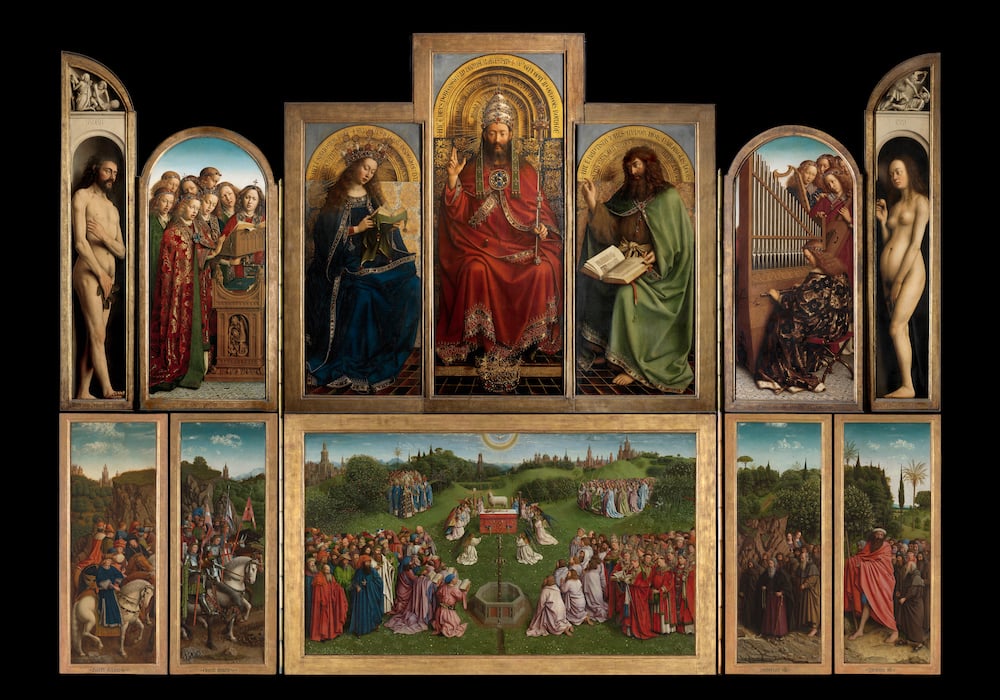
The famed Ghent Altarpiece has long been attributed to two artists: Dutch master Jan van Eyck and his lesser-known older brother Hubert, who died six years before the artwork was completed, in 1432. But what role the latter sibling played in bringing the painting to life always remained something of a mystery.
That is, until now. Researchers at the Royal Institute for Cultural Heritage in Belgium have confirmed what many historians suspected, that Hubert was responsible for the underpainting of the masterpiece, made for St. Bavo’s Cathedral in Ghent during the early 15th century, while Jan added the more detailed top layer.
It’s the closest we may ever come to learning about Hubert van Eyck’s own artistic accomplishments—which in turn could offer up some new insights into Jan’s considerable contributions to the evolution of Renaissance-era art.
The finding “opens the door to a new chapter in the study of the Flemish Primitives: the search for other paintings by Hubert Van Eyck,” the institute said in a statement this week. “He may be the ‘missing link’ between pre-Eyckian painting and the radically innovative Ars Nova of his younger brother Jan van Eyck.”
A scan of the Ghent Altarpiece showing which figures were painted by Jan van Eyck (red) versus those created by his brother Hubert (yellow). © Sint-Baafskathedraal Gent.
The researchers’ analysis comes amid a greater multimillion-dollar effort to restore the painting, ongoing since 2012. So far, their work has centered on the altarpiece’s bottom register, yielding a number of other important revelations. Remember, for instance, the unveiling of the meme-orable humanoid lamb in the central panel? It’s in that same section that conservators found Hubert’s extensive underpainting, which bears several key differences from the artwork we know today.
Hubert contributed a minimal rolling landscape in the background of the composition, for instance, before Jan fleshed it out with more location-specific details, including the Church of Our Lady in Bruges and St. Martin’s Cathedral in Utrecht. In the center, Hubert painted a natural spring, but his brother transformed it into the Fountain of Life. Most of the figures in the panel were similarly reshaped by Jan, but some were left as Hubert originally depicted them.
A layer of Hubert van Eyck’s underpainting in the bottom center panel of the Ghent Altarpiece. © Sint-Baafskathedraal Gent.
The Royal Institute also learned that a Latin quatrain on the Altarpiece’s frame, discovered in 1823 below layers of paint, was indeed written by the brothers, erasing speculation that it was added later.
“The painter Hubert van Eyck, a greater man was never found, started this work,” the inscription reads. “His brother Jan, second in art, completed this arduous task at the request of Joos Vijd. He invites you, on 6 May [1432], with this verse to behold what was done.”
Conservation work on the painting’s upper register will begin next year, according to the institute. Meanwhile, visitors can find the famed artwork in a $35 million bulletproof display at St. Bavo’s Cathedral in Ghent.